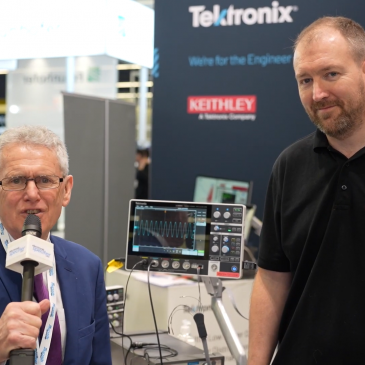
At embedded world 2023, Lee Morgan, Senior Technical Marketing Manager, at Tektronix talks to Electronic Specifier's Editor, Mick Elliott, about the MSO2 oscilloscope and its new features.
2-series MSO oscilloscope
The oscilloscope has a great array of features at its disposal:
- Compact for daily debug and testing
- Touchscreen interface and controls
- Comprehensive debugging tools
- Comprehensive analysis features with fast insight
- Optional accessories to add even more versatility
- Software for sharing, collaboration, and further analysis
- Pulse generator and arbitrary waveform generator
According to Morgan, “It’s the usability that really sets the 2-series apart, the touch screen is very fluid, the user interface is very simple to learn and use, but also it’s the ability to mount it on a Visa arm which takes up very little room on your bench.”
Tektronix was also excited to demonstrate an expansion on its initial launch, the option to make the oscilloscope battery-powered. “Now with two batteries in it you can have a full eight hours worth of testing whilst even being able to hot-swap the batteries,” says Morgan.
“The battery pack available on the 2-series is a simple case of just bolting it on the back and you can be away from a power source and do the same testing,” continues Morgan.
Beyond just these features, the oscilloscope has a variety of ways to control it the device. Whilst the touch screen is handy, there are also analogue options, as well as the capability to plug in a USB mouse and use that to control it.
The MSO22 comes with a 70-500MHz bandwidth, 2 analogue channels, 16 digital channels, an up to 2.5GS/s sample rate, and 10m record length. THE MSO24 comes with a 70-500MHz bandwidth, 4 analogue channels, 16 digital channels, an up to 2.5GS/s sample rate, and 10m record length. Both are configurable.

